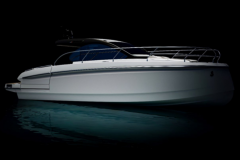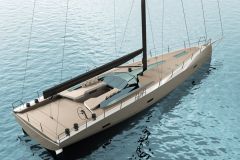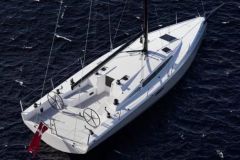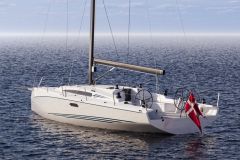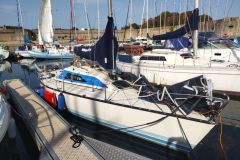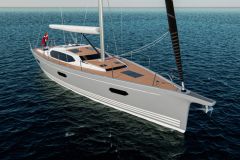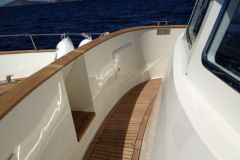Naval architecture is a clever balance between comfort of navigation and habitability. Faced with their drawing board, the architect has two ways of designing a boat:
- Either he is looking for volume for habitability and to make life on board easier by ignoring the notion of sailing performance
- Either he's looking to build a sailboat designed as an "efficient means of transportation"..
It is this second choice that the X-Yachts shipyard has always been following
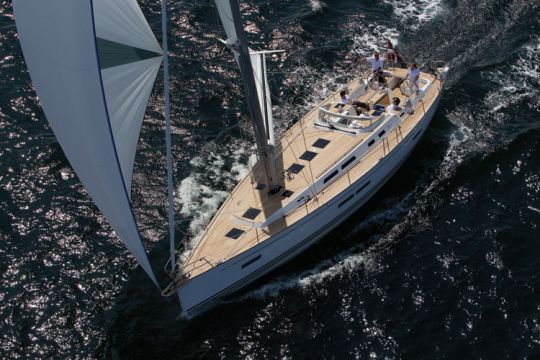
How do you build a high-performance yacht?
A boat design is a set of choices, of compromises. X-Yachts is uncompromising on four essential points that determine a good boat:
- The balance of the water lines
- Stiffness to the canvas
- The centering of weights
- The quality of construction
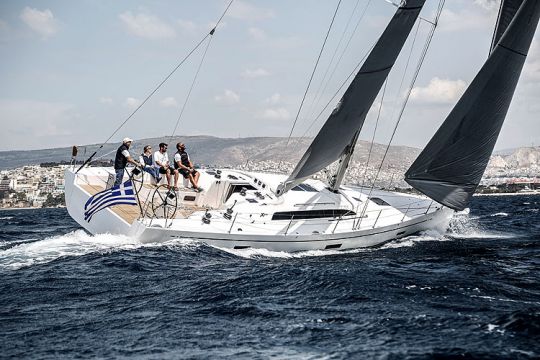
Balanced water lines even at the gîte
The balance of the water lines, preventing them from becoming distorted when heeling, leaves the boat in its hull axis. With this design, the boat is neither fiery nor slack at the helm. At X-Yachts, there are 3 types of hull designs: one for the Xp (Performance) range, one for the Xc (Cruising) range and the 3rd for the X range.
The Xp are designed for sailing with a crew whose position on the boat changes the heel and the trim of the sailboat. On the Xp hulls, the water inlets are fine at the bow to offer excellent upwind passage. On the other hand, this type of hull requires the weight to be shifted aft downwind. This is possible by moving the crew.
The Xc's are sailing with a small crew. The hull is shaped like a champagne flute. Round shapes that allow to carry more weight (for long cruising) and tolerate overloading. These hulls also provide a very smooth passage through the sea, which is the goal of cruising.
The X range is a compromise between the two. Coming from the Xp range, it offers more volume in the front third than the Xp range. This volume allows you to free yourself from the crew's position, the bow does not sink downwind under gennaker, and a light chine in the aft half also increases downwind stability: the boat is on rails. These developments, dictated by a programme of fast cruising with a reduced crew, also have the effect of offering more volume in the forward cabin as well as in the aft cabins.
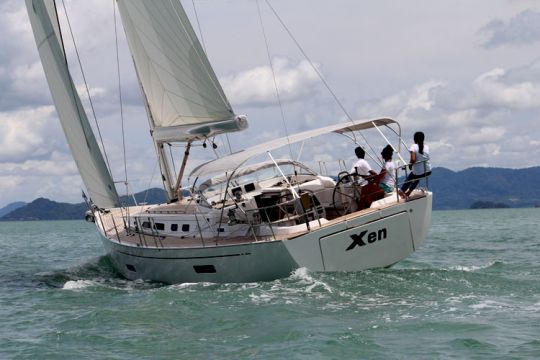
A stiff boat to support canvas
The stiffness of the canvas with a high ballast ratio (50% of the weight of the yacht is grouped in the keel bulb) and a low centre of gravity allow the sailor to carry canvas longer when the wind rises. The sailboat is more efficient and this is less tiring for the crew, who will have fewer manoeuvres to perform.
Modern material technologies provide an answer to this question. On X-Yachts, the hull is built in a foam sandwich with epoxy resin (lighter than polyester, for example on a 43-foot sailing yacht, the weight saving is 250 kg). The infusion manufacturing technique also offers weight control through the quantity and distribution of the resin.
X-Yachts also chooses a bulb at the bottom of the keel always with a view to placing the weight as low as possible. The keel sail is made of steel or cast iron, and the bulb is made of lead. The shipyard does not try to make the lightest boat, as light boats are not comfortable. To keep a good upwind passage in the sea without hitting the waves too much with the inertia of the boat, it is better to have a heavy boat.
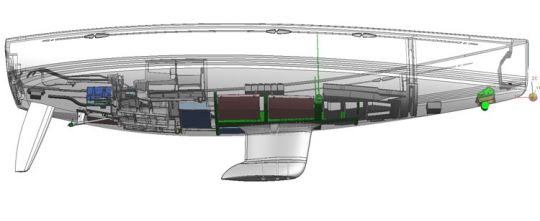
Weights in the center of the sailboat
The centering of the weights limits pitching and offers a better passage in the wave.
All the weights of the X-Yachts are centred around the mast in the saloon of the yacht. This is the ideal position to give the boat a good behaviour. The water tanks and batteries are located under the saloon benches. On the other hand, this is a bit of a burden on the stowage, a notion that is felt especially on models below 45 feet.
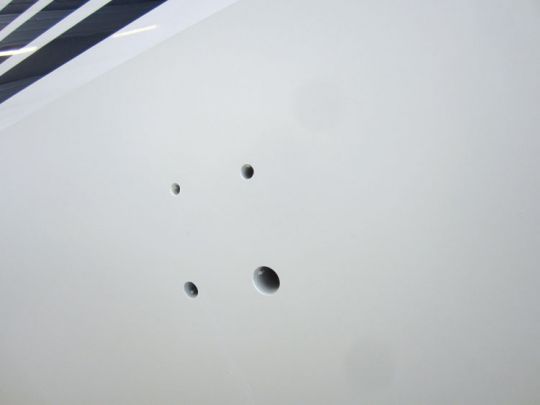
Exemplary construction quality
Take a close look at a mass-produced sailboat hull. Stick the eye against the hull. The gelcoat is infused to reveal the weave of the fabrics used underneath. To avoid this, X-Yachts passes 2 layers of gelcoat before starting to drape its hulls with 2 to 5 layers of matt fabric (not sprayed unlike mass-produced hulls) which allows the weave of the structural fabrics to be masked.
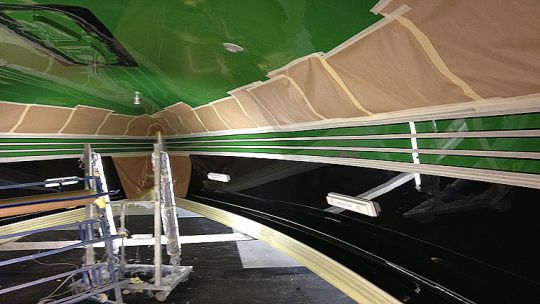
In the same way, the coloured decoration strips are neither painted nor have adhesives added after demoulding: the strips are made with a coloured gelcoat directly in the mould. Obviously, this type of production requires labour for the masking between each layer.
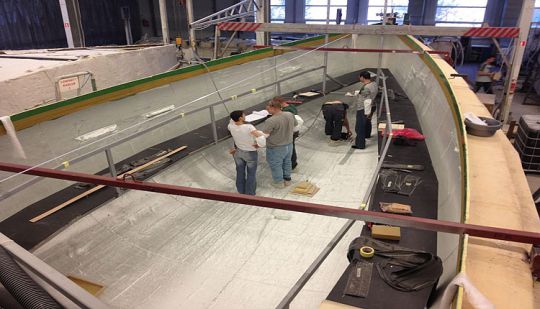
The final appearance of an X-Yachts hull is worthy of a car body. The finish is exceptional and lasts over time. But this necessarily has a cost, because building a hull mobilizes the mold for 10 days. The competition only leaves each hull in the mould for about 48 hours before releasing it for the next one..




